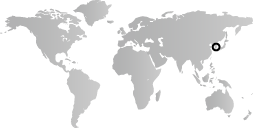According to the legend recounted in the Samguk Yusa, the Gojoseon (Old Joseon) was founded in Northern Korea and Manchuria in 2333 B.C. The Jin state was formed in southern Korea in the third century B.C. and power was usurped by the Han dynasty of China at the end of the second century.
Korea, 2000–1000 B.C.
Timeline
2000 B.C.
1750 B.C.
Neolithic cultures, ca. 7000–ca. 10th century B.C.
1750 B.C.
1500 B.C.
Neolithic cultures, ca. 7000–ca. 10th century B.C.
1500 B.C.
1250 B.C.
Neolithic cultures, ca. 7000–ca. 10th century B.C.
1250 B.C.
1000 B.C.
Neolithic cultures, ca. 7000–ca. 10th century B.C.
Overview
Key Events
-
ca. 1200–900 B.C.
Rice cultivation is introduced to Korea, most likely by agrarian populations moving onto the peninsula from China by way of Manchuria. Native grains, such as millet and barley, are also cultivated, and there is evidence of a growing reliance on animal husbandry.
Citation
“Korea, 2000–1000 B.C.” In Heilbrunn Timeline of Art History. New York: The Metropolitan Museum of Art, 2000–. http://www.metmuseum.org/toah/ht/?period=03®ion=eak (October 2000)
